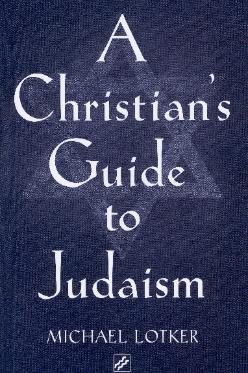Sample “Nutshells”
From Ch. 7: "Jewish Practice in Lots of Nutshells"
The following is an excerpt from chapter 7, “Jewish Practice in Lots of Nutshells.” It is presented with permission of the Paulist Press, all rights reserved.
The Cycle of Life
1. Circumcision & Baby Naming: As we have seen, Judaism is a religion of covenant, a mutual commitment and set of obligations that Jews as a people, and each of us individually, has with God. The Hebrew word for “covenant” is Brit (in
Ashkenazic Hebrew and Yiddish Bris) and the ceremony for recognizing a male baby as being in the Brit is called the Brit Milah, or “covenant of circumcision”
(often, you will hear this shortened and referred to as a Bris). As specified in the Bible (Gen. 17:9-14, 17:24-25, and 21:4), Abraham was told by God to circumcise himself, his two sons and “every male among you … as a sign of the covenant
between Me and you.” As God commanded Abraham, each baby’s circumcision takes place at the age of eight days (some say so that at least one Sabbath will take place before the circumcision), with the actual removal of the foreskin
traditionally performed by the mohel, an individual specially trained in both the medical and ritual requirements of the procedure. At the Brit, the baby boy receives his Hebrew name. Jews of Ashkenazi or Eastern European origin
generally will name the baby after a deceased relative they wish to honor, whereas it is common for Sephardic Jews to name the child after a living relative.
Jewish baby girls often receive their Hebrew name at the synagogue a few weeks (traditionally within a month) after birth; one traditional custom is that the name is simply announced in connection with the father’s being called to the Torah during services. Although Judaism does not mandate a specific ceremony similar to that of the Brit Milah, Reform Judaism, with its emphasis on equality between the sexes, has instituted a ceremony for welcoming baby girls into the covenant called Brit Ha-Chayim (“Covenant of Life”) or Brit Bat (“Covenant of the Daughter”). Increasingly congregations in all the movements are experimenting with beautiful ceremonies to celebrate the entry of their daughters into the covenant.
2. Bar & Bat Mitzvah: When a Jewish boy reaches the age of 13, and a Jewish girl reaches the age of 12 (13 in Reform practice), they are considered young adults, and are hence considered by our tradition to be obligated to observe Jewish law. Beginning in the Middle Ages, this rite of passage was
observed by having the young man (there was no equivalent ritual for women at that time) called up to offer blessings and, often, to read from the Torah scroll (see below for a discussion of the Torah and Torah scroll) during a regular morning service. Since this honor, called an aliyah, was reserved only for adult
Jewish men, this act signified his “coming of age” Jewishly. He was said to be a “son of the commandment” (meaning someone responsible for its performance)
or a Bar Mitzvah. In addition to reading from the Torah scroll, the Bar/Bat Mitzvah will also read a related passage from the one of the Biblical Prophets, called the Haftarah; a practice observed on sabbath mornings.
In modern times, this tradition has been expanded to include young women (who become Bat Mitzvah, “daughter of the commandment”) and has become an occasion for a festive family celebration often involving elaborate parties and
receptions. In our age where education is normally secular, the Bar/Bat Mitzvah signifies that a child has completed a course in Jewish learning and is now competent to conduct a prayer service as well as to read from the Torah. This requires a working knowledge of Hebrew and the structure of the prayer service. The Bar/Bat Mitzvah student will also normally provide a sermon commenting on his or her learning experience as well as on the Torah portion of the week.

